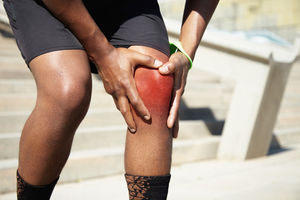
Sweat is not an indication of how many calories you have burnt during a workout session. PHOTO/WWW.STUDIOSWEATONDEMAND.COM
Embarking on a fitness journey requires not just dedication but also accurate knowledge of what you ought to do to gain the required level of fitness. However, amid the flood of research, personal opinions, and prevailing stereotypes, countless myths and misinformation, can make their way into your workout routine. This article will unravel some fitness myths, to help you get the best possible results.
Lifting weights make women masculine
There is a common belief that strength training workouts will make women look bulky and musculine Because of this, many women shy away from strength exercises.
Henry Ssebwami, a fitness coach, says women do not have the necessary testosterone to build muscle unless they compensate with steroids. A common misconception also, is that some exercises are for only men. Ssebwami confirms that there is no gender-based exercises.
You must work out every day for the desired results
Many of us refuse to go to the gym or to embark on any sort of fitness routine because we believe that to keep fit, we must work out every day. However, fitness experts advise against working out daily.
“Your weekly workout plan must have at least two rest days. Rest days promote both muscle recovery and growth. You can choose to work out effectively only three times a week and with this schedule, you will still achieve your fitness goals. For best results, consult a professional fitness coach,” Ssebwami advises.
You can spot train to reduce fat/weight in one specific area
There are plenty of workouts said to target specific areas of the body, say your arms, legs or core. While these routines can help build muscle, they will not transform that area drastically nor will they exclusively burn fat on that body part only. You cannot condition your body to lose weight in only one area since your body predetermines which fat stores it will use.
“An activity such as running, for example, will not burn fat only on the legs, it will burn fat all over the body. So, instead of trying to lose weight in one spot, create a balanced exercise programme, with a selection of weight training exercises to gradually lose weight and tone the whole body,” integrehab.com states.
Cardio is the most effective way to lose weight
There is a belief that running, or cardio is the most effective way to lose weight, which is also false. Sebwami says one can lose weight while eating a healthy, balanced diet. There is the assumption that increased muscle mass culminates in an increase in fat as well. Contrary to that belief, weight training builds lean muscle mass, which will in turn elevate your metabolism and hence, burn more fat, even when you are not directly exercising.
According to rafflesmedicalgroup.com, the decrease in muscle mass during weight loss can lead to a reduction in resting metabolic rate. This is why people tend to regain weight when they stop following a certain diet. So, complement your weight loss diet with some strength training. By reducing the loss of muscle, you will maintain your metabolic rate and, hence, prevent weight gain.
Pain means effectiveness
While you should expect to feel some soreness a day or two after working out, that does not mean that your workout was effective. A fitness activity should not hurt while you do it; if it does, you are either doing it wrong, or you have an injury. So, if it hurts, stop, rest and confirm with your instructor whether you are exercising the right way.
“If the pain does not go away, consult a doctor.
Sweating means you are burning fat
Sweat is not an indication of how many calories you have burnt during a workout session. Sweating is not in any way connected to one’s body fat. We sweat to regulate our body’s core temperature. While working out our body temperature rises so we sweat to cool the body down.
Sweating is not an indicator of exertion. Also, some people sweat much more than others. It is possible to burn a significant number of calories without breaking a sweat.
You need supplements to build muscle
Many, especially men, tend to think that they must use supplements to build muscle, which is not true. Ssebwami says the amount of muscle you will build is dependent on what you eat.
Eat more foods high in protein and that will create a caloric surplus, which is essential for muscle growth. You create a caloric surplus by taking in more calories than you burn each day.
“If your diet contains all the nutrients you need, then you do not need suppliments. You can build muscle by eating the right foods, coupled, with the right resistance workouts,” Ssebwami explains.
According to rafflesmedicalgroup.com excess protein consumption can also be detrimental to your health, especially if you have an underlying condition. For instance, studies have shown that extra protein is likely to exacerbate kidney complications such as renal failure.
You can eat whatever you want as long as you work out
Ssebwami says many of his clients tend to believe they can eat whatever they want as long as they work out. However, he says, to see results, your workout routine should be coupled with a healthy diet.




